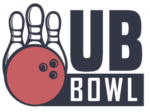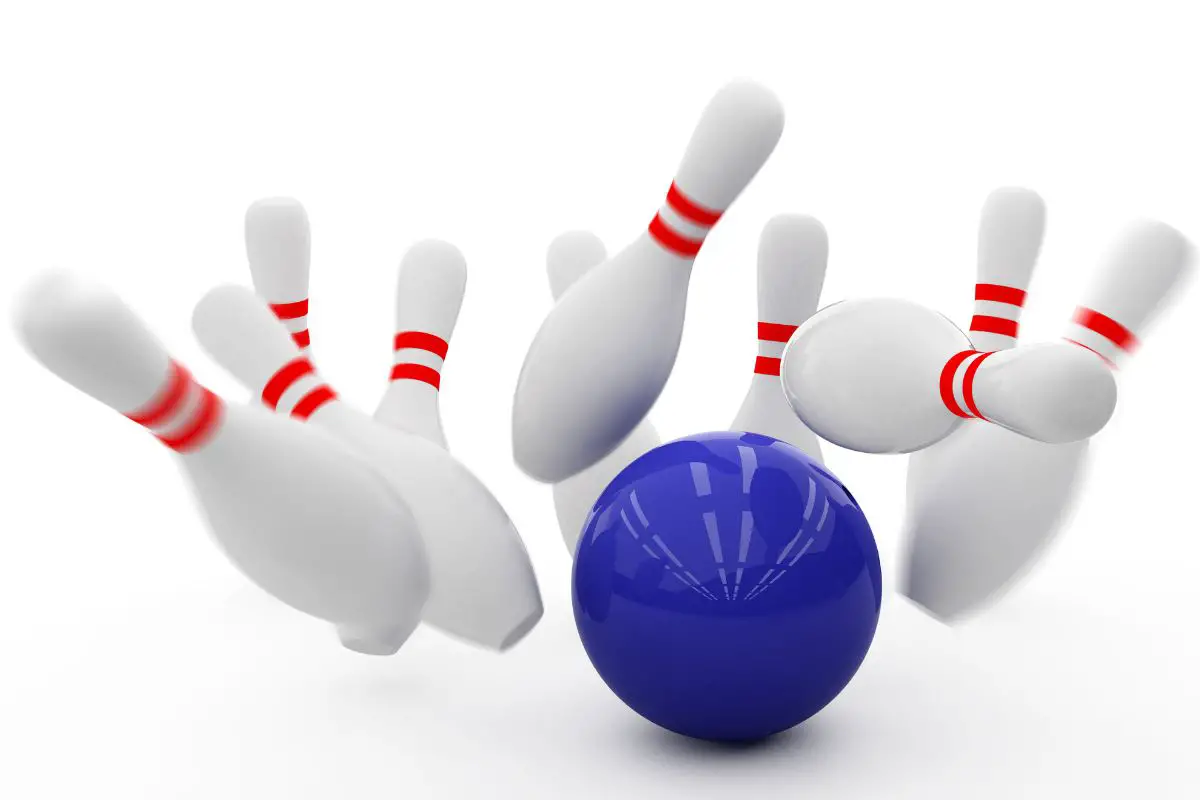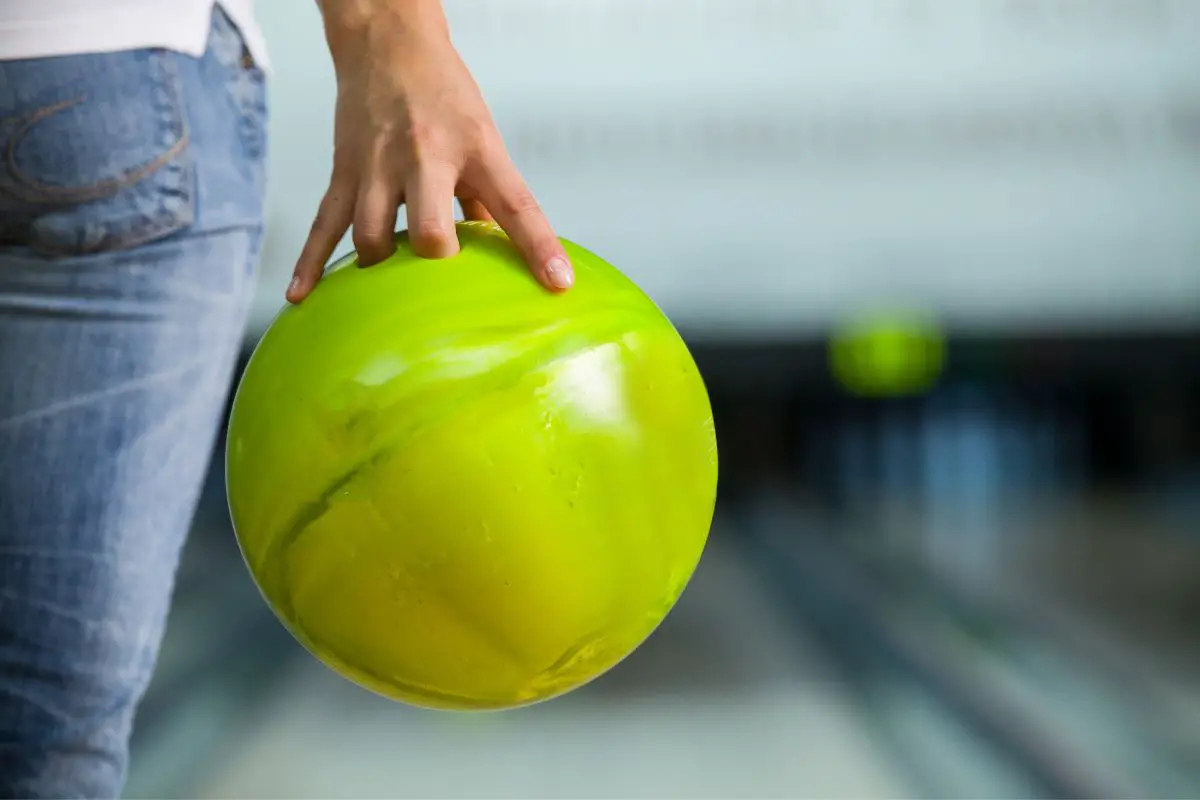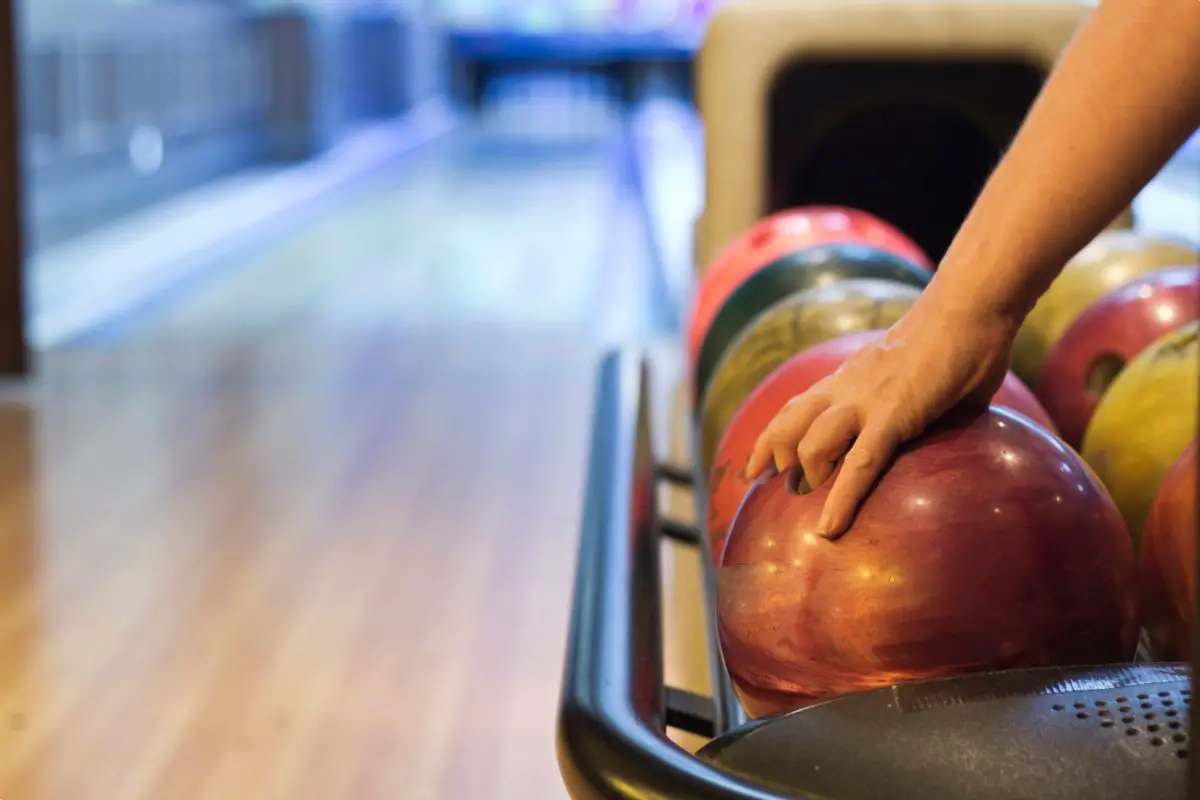Bowling has been around for many generations and has gone through several changes and advancements. One of these is the two-handed bowling technique.
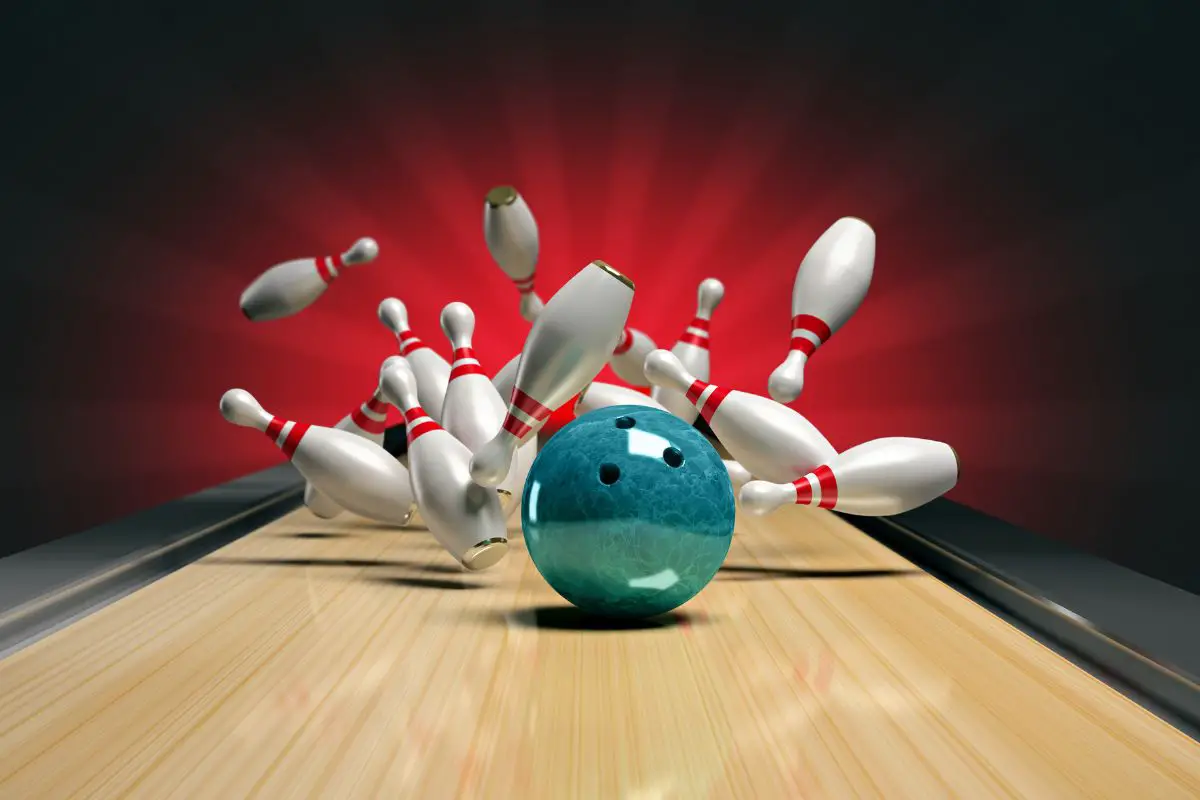
While some praise this technique, others have stated it gives bowlers an unfair advantage.
Despite the latter, the United States Bowling Congress (USBC), the governing body for the sport, studied this technique and stated there were no violations of using this technique.
Therefore, many have adapted to this technique, stating it gives them more control, translating into better performance in the sport.
How Does This Technique Work?
The two-handed technique involves using your other hand to slightly support the front of the bowling ball. This hand is used to stabilize the ball while you swing it backward.
As you swing the ball forward, the non-dominant hand is still supporting the ball at the front and helps you create more spin as you throw the ball.
In order to be successful with two-handed bowling, there are several factors to remember in order to execute this throw accordingly.
This article is going to provide you with a guide on how you can bowl using two hands. So, if any of you bowlers are looking to change your technique, or if you’re a beginner and feel this may be easier for you, look no further!
The Right Stance
When it comes to throwing the ball correctly using two hands, bowlers must ensure to adopt the right stance to achieve this. The stance is very similar to when you are bowling with only one hand.
You must begin with your knees bent slightly and relaxed, and your feet must be on the boards for the aiming marks where you want your ball to land. Your back should be tilted only slightly, around 5 degrees, towards the direction where you want the ball to be released.
The Right Approach
Having a good pace on the approach is key to being successful at bowling with two hands. Before releasing the ball, you only need to take four or five steps in order to perfect the hand-eye coordination needed for a good throw.
The first step should mimic what you would do when bowling with one hand. However, your second step is when you need to shift your weight slightly in order to compensate for the position of your dominant hand.
In this step, you are going to walk around your regular swing, but you will use your non-dominant hand to guide you to the back swing.
Your last step (this should be your fourth or fifth step), which is known as your slide step, will help generate more power and spin when it comes to releasing the ball.
Completing your first few steps correctly will ensure that your final step is done with appropriate control, leading to a powerful release.
The Right Grip
In regard to gripping the ball, some two-handed bowlers will insert the thumb of their dominant hand into the ball, leaving the rest of the fingers outside.
However, others prefer cradling the ball, without inserting any fingers. This is down to personal preference, how you feel most comfortable, and how you feel you have more control.
Whatever you choose to do, you must ensure that your shoulder blades are faced toward the bowling lane, aiming at your target, and your elbows are straight.
The Right Swing
To complete the perfect swing, you must generate enough momentum with your strides on your approach. A swing that is closer to your shoulder blades will be more powerful, however, it can leave room for more error.
Therefore, practicing this technique and tailoring it as you do, will result in the best throw possible.
You should always keep your non-dominant hand supporting the ball until you’ve released it. This will allow for more control and stability, making the most out of using this technique.
Release
When it comes to releasing the bowling ball, this should be done close to the ankle in order to generate more power. You should also avoid trying to create more spin using your non-dominant hand.
This is a mistake many two-handed bowlers make, but it can lead to a loss of control. A good spin will automatically happen, as long as you perform the correct stance, and have thrown accordingly.
Advantages Of Two-Handed Bowling
While this technique takes time and practice to perfect, many bowlers feel it is worth it due to the many advantages.
For example, two-handed bowling allows the bowler to have more power on the release of the ball. This also gives you more control over the ball’s path.
It also allows you to bowl for a longer period of time, as you are using two hands to balance the weight of the ball, rather than having all of its weight on one hand.
Two-handed bowlers also claim that this technique allows for more spin due to the higher speed of the ball – this refers to the rotation of the ball as it moves down the lane. By making sure the ball has an appropriate spin, it will dictate the angle at which the pins will be hit.
Disadvantages Of Two-Handed Bowling
While there are several advantages to this bowling technique, there are also a few disadvantages to be aware of.
This technique can be quite tricky to perfect, and it may take time and a lot of practice to get it right.
Sometimes new bowlers will hold the ball too long, as they are not used to using two hands, and this can throw them out of whack when it comes to releasing on time.
Bowlers may also find themselves at a disadvantage if they aren’t using bowling balls that are appropriate for the two-handed technique. You must be smart and agile when it comes to using both hands, as there are certain steps to follow in order to perfect the technique.
Is This Technique Easier?
Some bowlers do find the two-handed technique easier. This is especially the case with those who struggle to get a good spin on the ball using only one hand.
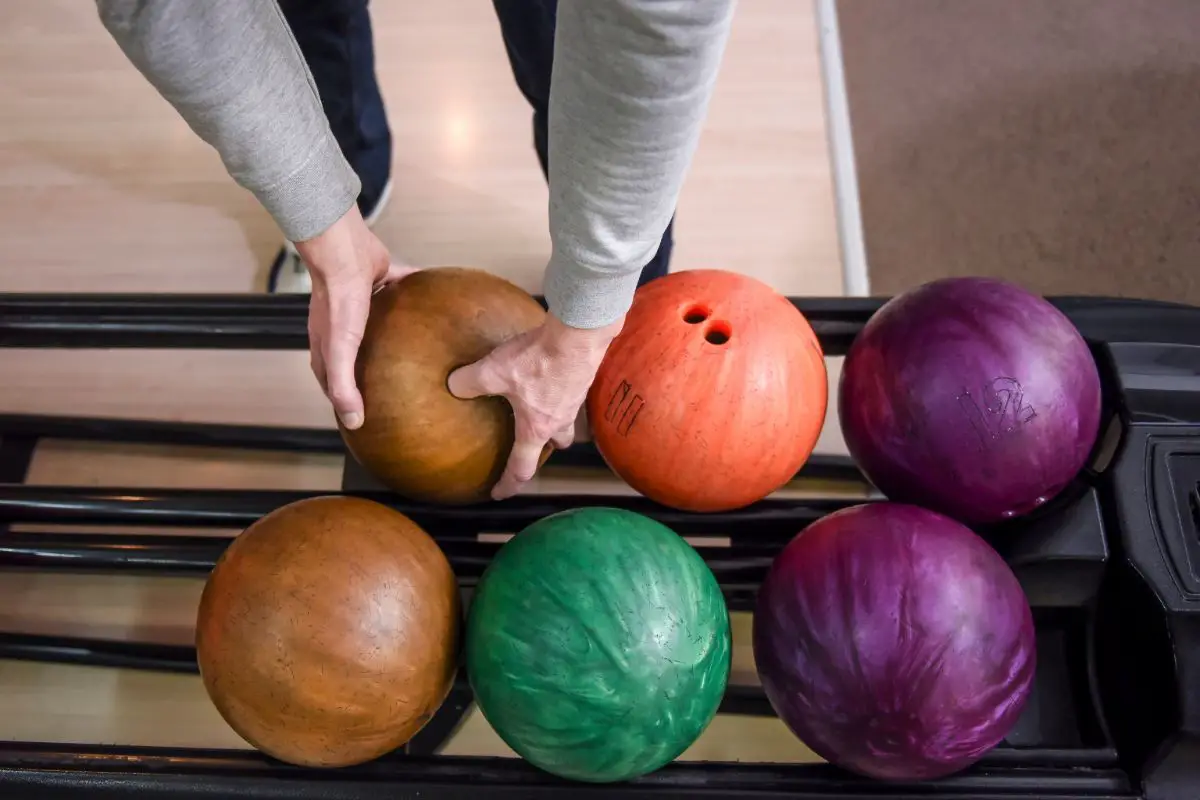
In this case, the non-dominant hand can provide an adequate amount of support to achieve this, although it is important not to overcompensate by doing this.
Some professionals have also adopted this technique for the extra control and spin it can provide, even if they are comfortable with single-hand bowling.
Is Two-Handed Bowling Allowed In Tournaments?
As touched upon earlier, there has been some controversy around using this technique, with some bowlers stating it gave those who used it an unfair advantage.
The USBC studied this technique and came to the conclusion that it does not give bowlers an unfair advantage. Therefore, it is allowed when it comes to bowling tournaments.
This is because those who play two-handed, also experience the same struggles as single-handed players, such as reading lanes, and perfecting the technique.
What Are The Best Bowling Balls For Two-Handed Bowlers?
There are a few kinds of bowling balls that are best for two-handed players.
Plastic bowling balls are the ones you are likely to find at your local bowling alley. These work fine for two-handed players and provide less friction on the lane. This means the ball will move faster down the lane.
Urethane balls are also a good choice, and they can provide you with a smooth and consistent hook. These balls usually have larger core options and are easy to control.
Reactive Resin balls are best for bowlers who want aggressive curves. These also have quite a few core options inside the ball and are what help the ball hook more and hit the pins harder.
Should Bowlers Switch To Two-Handed Bowling?
Those who are comfortable with single-handed bowling should not completely rule out the two-handed technique.
While it is a technique that works best for those who struggle to get a good spin on the ball, knowing how to perfect both techniques will really get you ahead of the game, making you a fantastic all-around player.
Final Thoughts
To conclude, two-handed bowling is popular among many bowlers for the several advantages it brings.
Those who struggle to get a good spin on the ball with just one hand, really find this technique useful.
As mentioned, professionals who have perfected single-hand bowling also occasionally turn to this technique, as it allows for more support and control in some cases.
We hope this article has provided you with all the information you need on two-handed bowling.
- A Comprehensive Guide to the Top Bowling Movies of All Time - December 23, 2023
- Bowling Shoes Selection Guide: How to Choose the Right Fit - September 27, 2023
- Bowling Ball Buying Guide: How to Choose the Right Ball for You - September 23, 2023
